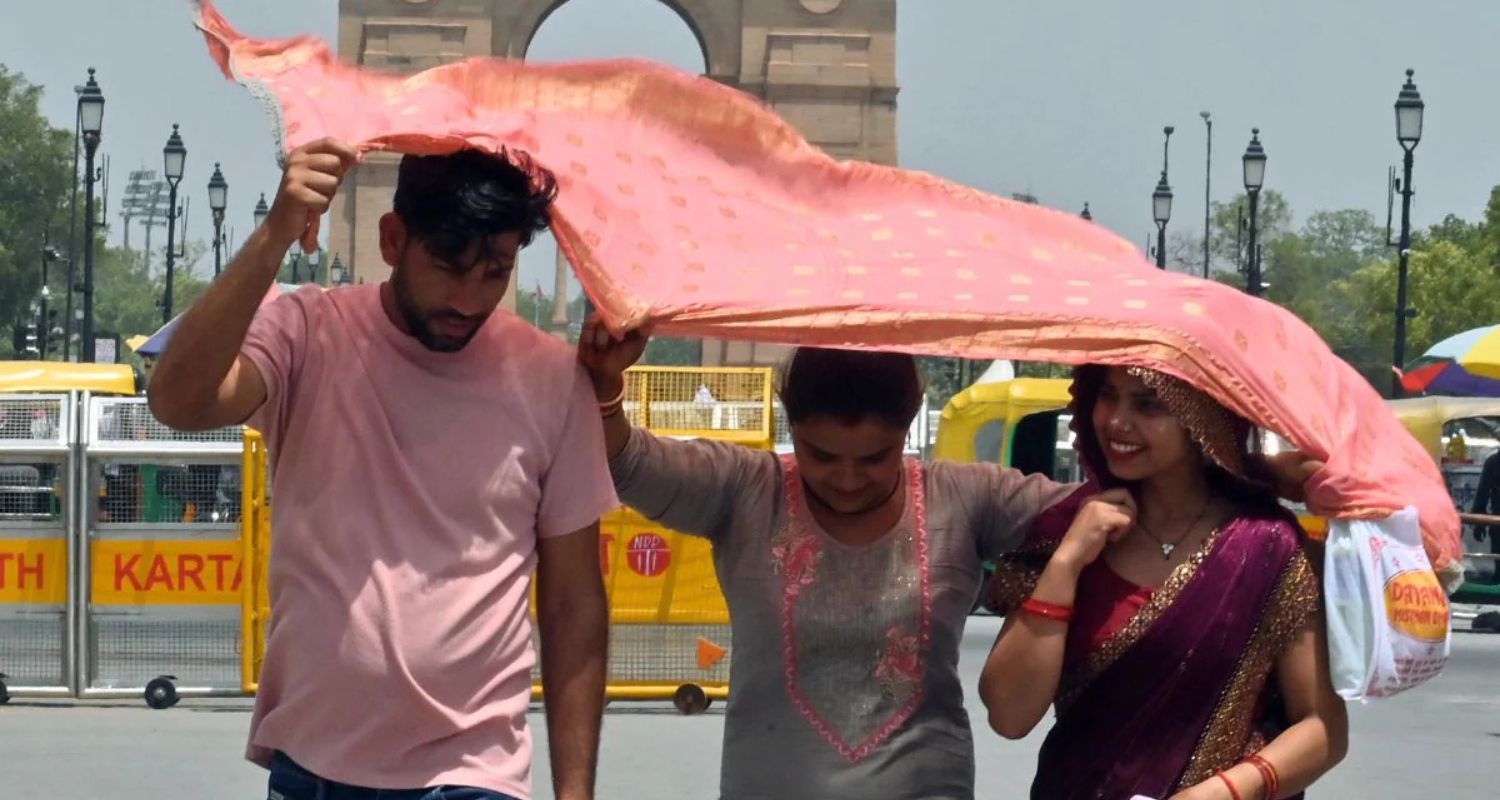Delhi and parts of northwest India are set to experience a hot and dry week ahead, with the southwest monsoon expected to remain stalled over central India during this period, according to the India Meteorological Department (IMD). Forecasts indicate that rainfall activity in the region is unlikely to pick up until after a week, delaying relief from the intensifying heat.
The rising temperatures were already evident on Saturday in the national capital, where the mercury neared 40°C. Safdarjung, Delhi’s base weather station, recorded a maximum temperature of 39.8°C, which is around normal for this time of the year. However, IMD has predicted that the maximum temperature in the city is likely to increase by 3 to 4 degrees Celsius over the next five days. The temperature is expected to reach 42°C on Sunday and rise further to 44°C by Tuesday, which would make this the hottest week of the season so far. The highest maximum temperature recorded in Delhi this season was 42.3°C on May 16.
This intense spell of heat is also likely to be one of the last before the monsoon resumes its advance into other parts of India. The monsoon has not progressed since May 29, when its movement stalled due to an intrusion of dry air. According to IMD’s extended range forecast, the monsoon is expected to start advancing again between June 12 and 18. So far, the early arrival of the southwest monsoon had kept summer temperatures lower than usual in many parts of the country.
Typically, the monsoon covers most of the country by the end of June and reaches all regions, including Delhi, by July 8. The usual monsoon onset date for Delhi is June 27. Former secretary of the Union Ministry of Earth Sciences, M Rajeevan, noted that models suggest a weak monsoon until at least June 12 due to weaker monsoon flows and the continued intrusion of dry air from the northwest. He also observed a growing trend of prolonged hiatus periods during monsoon progression and added that revival is expected by the third week of June.

On Saturday, some parts of Delhi already experienced maximum temperatures above 40°C. Ayanagar recorded the highest at 41.2°C, followed by Palam at 40.7°C. At the same time, air quality in the city deteriorated, with the Air Quality Index (AQI) falling into the "poor" category at 209. In response, the Commission for Air Quality Management in NCR implemented Stage 1 of the Graded Response Action Plan (GRAP) to control pollution levels.
Although no heatwave alerts have been issued for Delhi yet, IMD has stated that heatwave conditions are likely to affect parts of Punjab, Haryana, Chandigarh, Uttar Pradesh, Madhya Pradesh, and western Rajasthan. IMD scientist Naresh Kumar explained that while many regions have been recording below-normal temperatures, this trend is expected to shift over the next four to five days. He said that heatwave conditions could return to northwest India, particularly western Rajasthan, starting June 9, and to parts of Punjab, Haryana, Uttar Pradesh, and Madhya Pradesh by June 10. In the Delhi-NCR region, temperatures may reach 43 to 44°C.
Also Read: Power consumption dips, all thanks to early rains
According to IMD’s classification, a heatwave occurs when the maximum temperature exceeds 40°C and is at least 4.5°C above normal. If the maximum exceeds 45°C, it is also considered a heatwave in the plains. A “severe heatwave” is declared when the temperature is more than 6.5°C above normal and above 40°C.
Mahesh Palawat, Vice President at Skymet Weather, noted that regional weather systems such as a western disturbance and a cyclonic circulation have weakened. As a result, dry weather conditions are expected to persist across several states including Punjab, Haryana, Delhi, Uttar Pradesh, Madhya Pradesh, Rajasthan, Bihar, Jharkhand, West Bengal, Odisha, and Chhattisgarh, as well as the western Himalayan region. He added that monsoon activity is expected to pick up around June 13.
Meanwhile, an increase in rainfall activity is anticipated from June 10 in the southern peninsular and northeastern parts of India. Isolated heavy rain is likely in these areas, particularly in Kerala, Karnataka, and Tamil Nadu. IMD’s Naresh Kumar confirmed that after three to four days, the monsoon is expected to revive across the southern peninsula with the return of heavy showers.
This summer has been unusually mild so far, largely due to excessive rainfall in May, which kept temperatures in check. Delhi received 184.6 mm of rainfall in May—the highest ever recorded in the month, according to data going back to 1901. Notably, there was not a single heatwave day in May this year, in stark contrast to last year, which saw six heatwave days during the same month. In 2023, Safdarjung recorded a maximum temperature of 46.8°C on May 29, and some parts of the capital even crossed 49°C during a six-day heatwave between May 26 and May 31.
Also Read: Heatwave Persists in Punjab, Haryana


